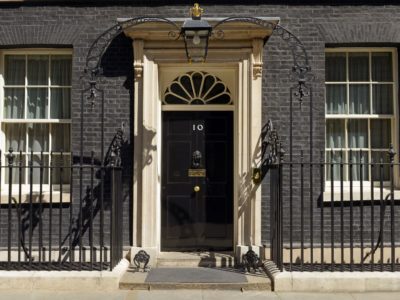The number of overseas landlords with property in the UK has fallen from 14.4 per cent in 2010, to just 5.8 per cent in the first 11 months of 2018, according to recent data from Hamptons International.
Throughout every region in the UK, the number of overseas landlords has fallen and the area with the highest decrease was recorded in London, as the proportion of homes let by overseas landlords fell 15.5 per cent since 2010, according to the recent data.
The number of residential rental properties let and managed by overseas landlords has more than halved since 2010 when Hamptons International’s records began. In 2010, 26 per cent of London residential properties were let by overseas landlords, but in 2018, just one in ten residential properties are let by landlords living overseas, reaching 10.5 per cent of homes let out this year to date.
In the past two years alone, the capital has seen a 4.7 per cent decrease in the number of overseas landlords. However, London is still the area that is most highly favoured by overseas landlords compared to any other region in the UK, as 10.5 per cent of properties in 2018 were owned by this demographic, according to the Hamptons International data.
When looking at the rest of the UK, the number of international landlords has also fallen since Hamptons International’s records began. In the South East, there was a 10 per cent decrease while the North East and the East Midlands recorded a 6 per cent decrease. In 2010, the number of overseas landlords outside of London was recorded at 14.4 per cent, which has since fallen to 5.8 per cent in the first 11 months of 2018.
Excluding London, the area in the UK with the highest number of overseas landlords was recorded in Yorkshire and the Humber at 6.7 per cent. However, even this region has witnessed a fall of 4 per cent of overseas landlords since 2010, according to Hamptons International.
Areas in the UK outside of London with higher levels of overseas landlords were the South East and Scotland, which both recorded 6.1 per cent, the South West and East at 5.6 per cent and the North West at 5.4 per cent.
Whereas looking at the areas with the smallest number of overseas landlord, the West Midlands was recorded to have 4.4 per cent of overseas landlords, the East Midlands had 3.5 per cent and Wales had just 3.3 per cent of overseas landlords.
UK overseas landlords by global region
When breaking down the data of the UK’s international landlords further, the largest group were Western Europeans at 34 per cent, which was followed by Asian at 20 per cent and North American at 13 per cent.
The region with the lowest number of overseas landlords with properties in the UK was Eastern Europe at just 1 per cent, followed by South America with 3 per cent and Africa, reported to have 7 per cent of overseas landlords in the UK.
When looking at the decreasing levels of overseas landlords, Western Europeans fell by 2.1 per cent, which was compensated by an increase in Asian landlords of 2.1 per cent and Middle Eastern landlords at 1.4 per cent since 2010. Landlords from the Middle East now represent 11 per cent of all the UK’s overseas landlords, according to recent data from Hamptons International.
As the levels of overseas landlord’s falls across the UK, Aneisha Beveridge, head of research at Hamptons International commented: “The proportion of homes let by an overseas-based landlord has more than halved since 2010. Sterling’s depreciation since 2016 undoubtedly makes it cheaper for international buyers to purchase property in Great Britain.
“However, the conversion of pounds back to local currency means additional costs which cut into an overseas landlords’ monthly income. This combined with a harsher tax regime for overseas investors is dissuading some international investors from entering the rental market.”
As the levels of competition from overseas property investors dropped off in the first 11 months of 2018, this is potentially good news for UK based landlords looking to expand their portfolios.























Comments